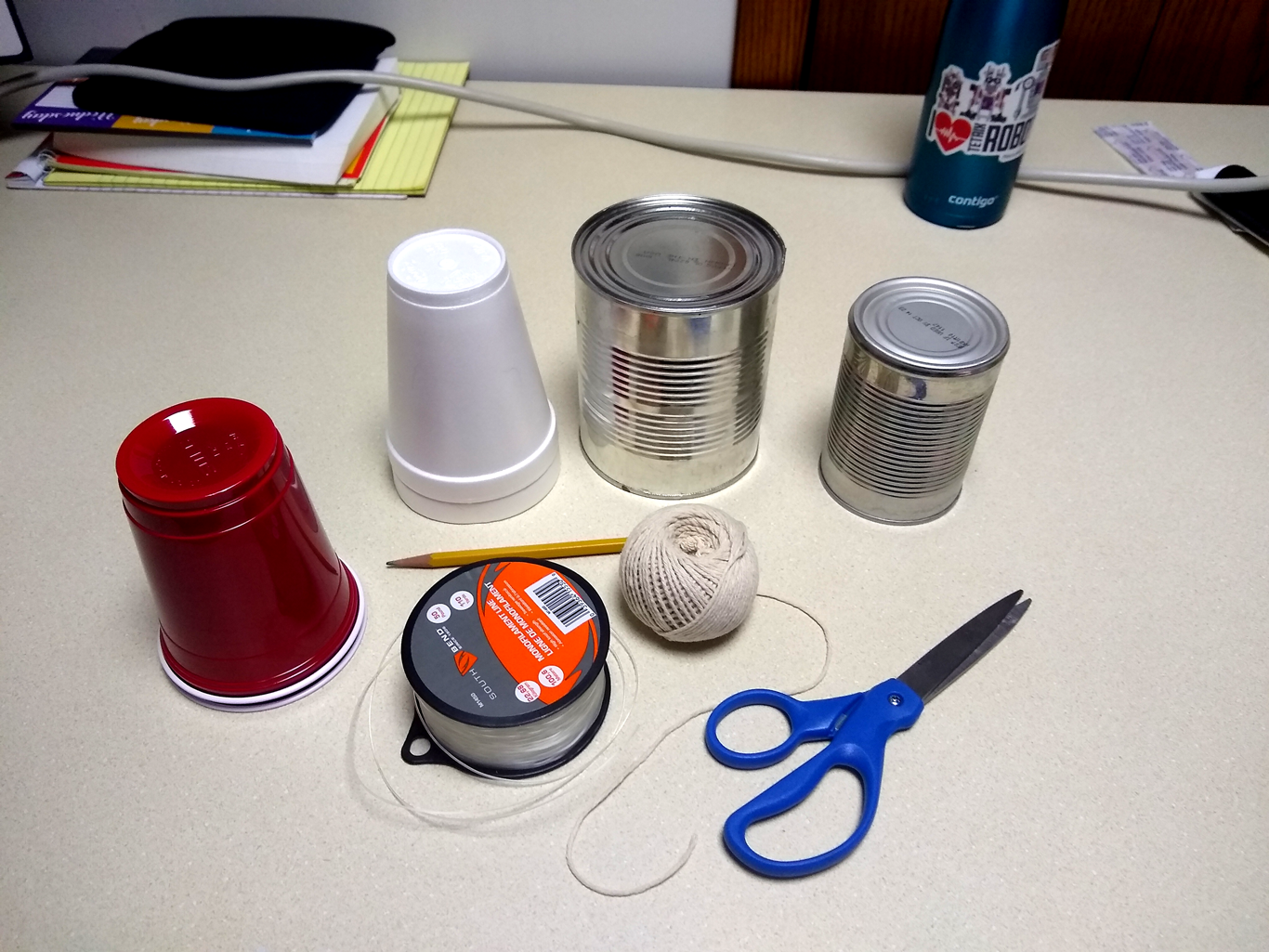Updated 6/5/24
January 19 is National Tin Can Day. Yep, there really is a day for everything it seems. So why recognize this one? Well, we can’t pass up the opportunity for some hands-on learning! Tin cans are celebrated for the advancements they brought to food preservation in the early 1800s. Outside of their primary purpose, I’m thinking about celebrating the science of the tin can telephones. The Guinness World Record for the longest functioning tin can telephone is 1,226 feet!
While tin can telephones are primarily used today to learn about sound and vibration, versions of the tin can telephone were made in the 1700s and sold into the late 1800s. Such designs were used until Alexander Graham Bell’s telephone gained popularity and took over the telephone market as we know it. When you think about how these simple components come together to transmit sounds over a great distance, it’s almost like magic – or at least that’s what I thought when I was a kid. Well, I know behind magic, there is often science.
Time to Experiment
Making a tin can telephone is an easy and fun project. Follow these steps to get started.
- Gather supplies. For true tin can telephones, you’ll need two empty tin cans, string, a pencil, a nail, a hammer, and scissors.
- Mark the center on the closed end of both cans. Use the nail and hammer to pierce the end of each can and make a hole.
- Thread the string through one hole and tie a knot at the end of the string so the string will not pull through the hole when it’s pulled tight. Make sure the knot is inside the can with the string exiting the closed end of the can. You can use tape to secure the string.
- Cut the string to the desired length and thread the other end through the other hole, knotting the string inside the can.
- Find a partner – each of you should take a can and walk away from each other. Position the cans so that the strings are pulled tight. One partner speaks into the open end of their can while the other listens using the open end of their can.

You can also make these telephones with plastic or foam cups – using scissors or pencils to pierce the cups instead of using a hammer and nail. Even better, why not make multiple types of telephones? There are all sorts of variables to hypothesize about.
- Does fishing line work better than cotton string?
- How long can you make the string and still hear?
- Does the size of the tin can make a difference?
- Is there a difference between foam cups, plastic cups, or tin cans?
How Do Tin Can Telephones Work?
Sound travels as waves through a medium. When a teacher speaks to a classroom, the medium is the air in the classroom. The particles in the air are very spread out, so sound can’t travel very far. The particles in a string are packed more closely together and help the sound waves travel a greater distance.
As you speak, your vocal cords create vibrations that push through the air to the front of your mouth. This air creates vibrations in the form of compression waves. The vibrations travel out of your mouth, into the can, and down the string to the other can. Our ears feel the vibrations and turn them into electric signals for our brain to interpret. The string must remain tight in a straight path for the waves to travel down. Remember, the string is carrying the vibrations from one can to another.
Seeing Sound
One of the difficult things about understanding sound and sound waves is that you can’t see them. You can, however, use a simple experiment to make them visible. Tightly cover a bowl (or even a tin can 🙂) with plastic wrap. Sprinkle the plastic wrap with salt, rice, or other small objects. Then, it’s time to make some noise. You can snap your fingers, hit a metal object such as a pan, or even play music from a cellphone speaker near the bowl to watch the salt or other objects dance with the vibrations of the sound waves. This is a simple cymatics experiment. Cymatics is the process of making the sound visible by vibrating a medium.
You can also download a variation of this activity – using sprinkles – from STEM Anywhere.
 Looking for more activities to learn about sound waves? Try these out:
Looking for more activities to learn about sound waves? Try these out:
And, while you’re trying those out, explore some of these books to keep the excitement going!
I surely enjoyed the opportunity to make a tin can telephone and watch salt dance to my favorite song. I hope you find an opportunity to celebrate National Tin Can Day and learn about sound waves.
MORE RESOURCES:







